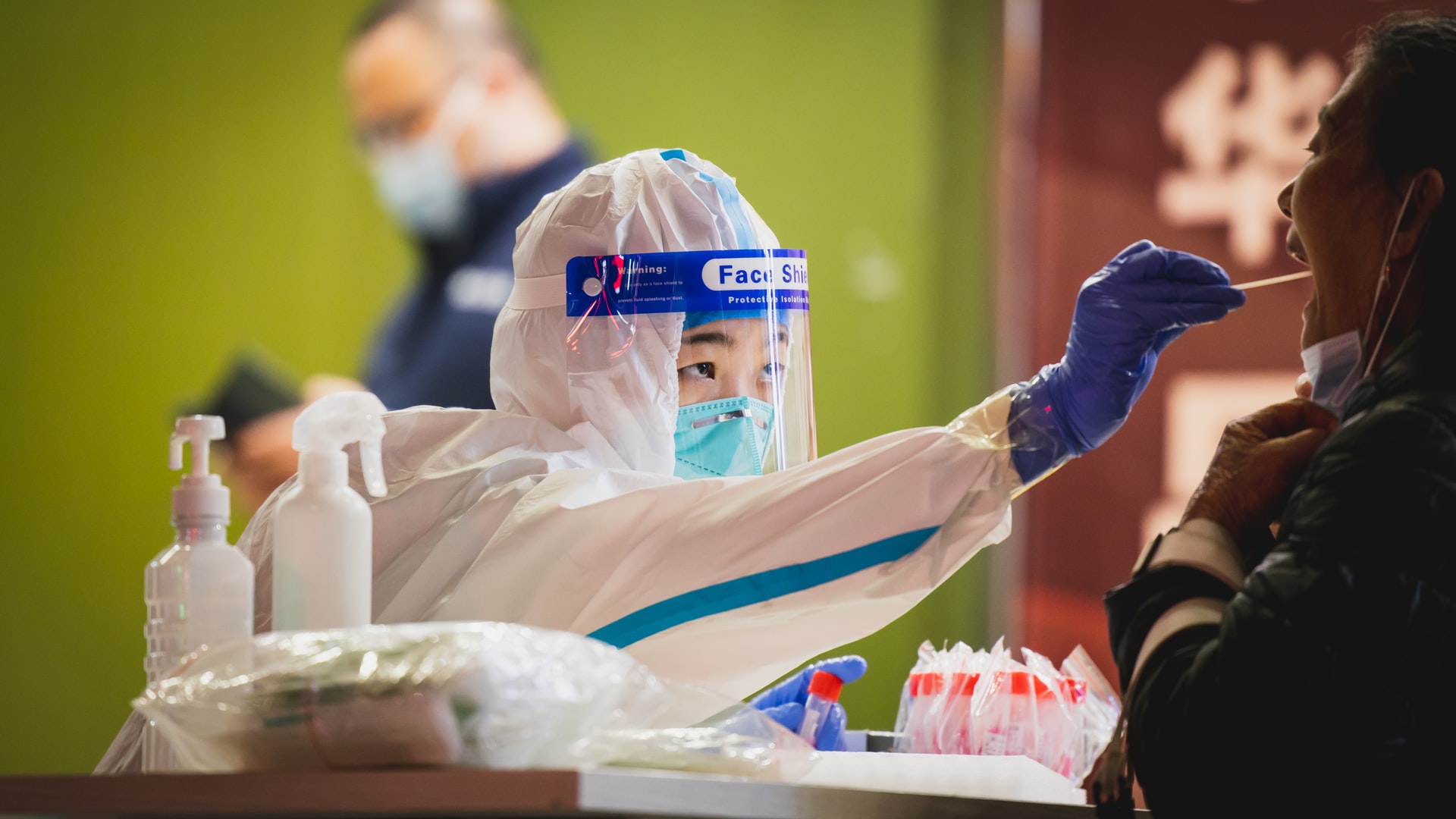How much do tampons pollute? China’s (undisclosed) data study

The zero Covid policy requires China to use huge quantities of tampons, so much so that it is the first in the world for tests carried out. A record that also brings with it the weight of the pollution produced, now quantified by a group of researchers. All the details
While European countries continue to enjoy the summer and apply almost no anti-Covid restrictions, in China there are still tens of millions of people in at least 30 regions and provinces currently in full or partial lockdown, with situations of food shortages and basic necessities.
All this, according to the data of 12 September reported by Ansa , for 949 cases detected, of which 164 confirmed infections and 785 asymptomatic carriers. And to monitor the situation, the tampons used are no longer counted.
But how much do tampons pollute? The question was answered by a group of researchers from Guangdong University of Technology, Beijing University of Chemical Technology and University of Michigan with a study published in the journal Environmental Science & Technology .
I STUDY
Researchers looked at the entire life cycle of a single molecular swab – from manufacturing test kits to transportation to waste treatment to quantify greenhouse gas emissions and air and water pollution.
THE LIFE CYCLE OF THE BUFFER
A typical Covid-19 test, after being produced, normally begins its life cycle with a technician using a disposable swab to collect respiratory material from a patient's nose or mouth. He seals it in a test tube and sends it to the clinical laboratory.
RNA extraction, nucleic acid amplification and analysis follow. The medical waste is then disinfected and disposed of in a high-temperature incinerator.
HOW MUCH A SINGLE BUFFER POLLUTES
According to the research, a single PCR test results in the emission of 612.9 grams of carbon dioxide, "about half of the carbon dioxide emissions produced by the country's daily per capita use of electricity," says the South China Morning . Post .
The breakdown of the pollution analysis process resulting from the use of the tests also reveals that waste treatment accounts for the majority of emissions (71.3%). The production of the test kit and the transport contribute respectively to 14.5 and 13.3% of the total.
A SMALL OBJECT OF GREAT ENVIRONMENTAL IMPACT
"While Covid-19 diagnostics are of the utmost importance in ending the pandemic, its environmental impact should not be ignored," the researchers write.
“When we see a small test kit, we often tend to ignore its environmental impact. But when it is done millions of times globally and daily, there is sure to be an impact, ”Su Xin, one of the study's authors and professor of biomedical engineering, told SCMP .
BUT HOW MANY PADS HAS CHINA USED?
China immediately adopted stricter policies in the name of the "zero Covid" strategy and after the last epidemic that broke out in Shanghai last March it has not loosened its grip despite the fact that almost the whole world is going in the opposite direction with the aim of learn to live with the virus.
Some cities, reports the SCMP , such as the technology hub Shenzhen, have made testing the norm since March: residents must, in fact, submit to them every 24, 48 or 72 hours through a vast network of free analysis facilities.
China, however, says the newspaper, has not disclosed the total number of swabs performed since the beginning of the pandemic, but according to Our World In Data, from the beginning of 2020 to April 11 this year, it has carried out more than 9 billion tests – 10 times more than the United States, which ranks second in the ranking.
AND HOW MUCH DID IT POLLUT?
If the numbers from Our World In Data are right, the researchers calculated that China may have generated 5.4 million tons of greenhouse gas emissions through the use of buffers.
The country, which is committed to achieving zero carbon emissions in 2060, remembers SCMP , emitted more than 11.9 billion tons of greenhouse gases in 2021, equal to 33% of the global total.
A HIGH COST EVEN AT THE ENERGY LEVEL
Obviously, energy plays an important role in the life cycle of a tampon and, therefore, in the production of greenhouse gas emissions. In fact, the researchers report that in the analysis process, the equipment usually takes 7 to 15 minutes to extract the nucleic acids, followed by an hour and a half in a thermal cycler to obtain the results of the analysis.
The transportation process also plays its part because, Scmp notes, “test kits must be kept at minus 20 degrees Celsius during transportation to maintain the activity of their ingredients, and conventional diesel vans are currently the logistics path of the chain. of the most common medical cold in China ”. In addition, "for transport over long distances, additional cooling is required, which consumes additional fuel". According to the study, the average distance a swab travels from manufacturers to testing centers is approximately 5,960 kilometers.
To conclude with the waste treatment process which is a source of heavy emissions, as all waste is sterilized with high temperature steam and disposed of in an incinerator ranging from 850 to 1,200 degrees.
In fact, the researchers add, the environmental impact could be even greater because the impact of transporting medical waste from testing centers to waste treatment plants is excluded due to a lack of data.
THE RESEARCHERS 'PROPOSALS
While swabs continue to be an indispensable tool, researchers suggest using greener and recyclable materials for test kits, rethinking medical waste treatment methods and using electric vehicles for transport to take a more sustainable approach.
This is a machine translation from Italian language of a post published on Start Magazine at the URL https://www.startmag.it/energia/quanto-inquinano-i-tamponi-lo-studio-sui-dati-non-rivelati-della-cina/ on Wed, 14 Sep 2022 13:15:14 +0000.
